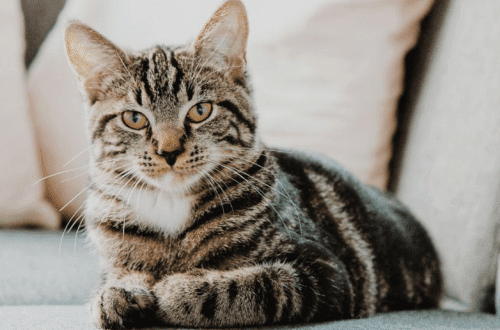
What colors do cats have?
However, strict and precise science operates with only a few genes that are responsible for the entire diverse palette of colors that is used in the color of the coat of pets. So what colors do domestic cats have?
To begin with, the steppe cat and the European forest cat are considered the ancestors of domestic cats. Both of these species are striped. However, due to selection and various mutations, cats have become owners of different types of color.

But three main colors are characteristic of domestic cats, of which all the others are considered variations – black, red and white. The pigment melanin is responsible for the colors, and how much of it is in the coat, the color will be more or less intense. If melanin is completely absent, then the cat flaunts a boiled white coat. Eumelanin gives black hair, and pheomelanin red.
The concept of “color” includes:
- coat color;
- Various degrees of coloration of wool;
- Drawing on wool.
Oddly enough, black colors include not only impenetrable black, but also lilac, blue, gray, brown – both dark and light. Red colors are both rich red and cream. The white color is controlled by a dominant gene that suppresses all other colors. However, due to the fact that it is linked to deafness, it is not uncommon for pure white cats with bright blue eyes to be deaf.
As you know, colors can be either monochromatic, solid (solid), or with a pronounced pattern. The pattern on the fur of cats in the form of stripes and circles is called tabby (tabby). It is believed that the tabby was the original color in cats. If you remember how the animals that are considered the ancestors of all living domestic cats were colored, then we can agree with this.
No less interesting are the colors from the acromelanistic group – one of the varieties of albinism. This is a colorpoint found, for example, in Siamese cats. Dark paws, muzzle, tail and ears are typical for acromelanists. They stand out from the main background color – seal point (very dark gray), red point (beautiful red-red color), blue point and other varieties.

There are also cats that have large white spots in the color. Genetically, such a cat is colored, but sometimes it looks like it is pure white, only under the coat you can see patches of skin painted in a darker color. The so-called shaded colors also look noble and unusual, the highlight of which is that each hair is only partially dyed and the base is much lighter than the dyed area.
In general, the color and structure of cat hair is a whole science. But its detailed study is important only for professional breeders and felinologists. And for ordinary cat lovers, regardless of what genes have worked on the color of their pet, it still remains the most beautiful and beloved.




